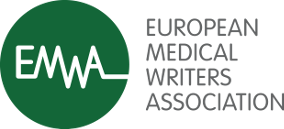Regulatory News - June
CDER’s manual of policies and procedures for collaborative identification, evaluation, and resolution of a newly identified safety signal associated with marketed drugs.
Consistent with FDA’s mission to promote and protect public health, the Center for Drug Evaluation and Research (CDER, the Center) monitors the benefit–risk profile of drugs over their lifecycle and takes regulatory or compliance action when necessary to ensure their continued benefit–risk balance. This manual of policies and procedures (MAPP) describes the policies and procedures in CDER for collaborative identification, evaluation, and resolution of a newly identified safety signal (NISS) associated with marketed drugs.
The ICH guideline S11 on nonclinical safety testing in support of development of paediatric pharmaceuticals
aims to establish international standards for and promote harmonisation of nonclinical safety assessments that support the development of pharmaceuticals for paediatric use.
The EMA has revised its procedural guidance for both pre- and post-authorisation procedures.
These updated guidance documents were released by the EMA on May 18th 2020. The updates along with effective pre-submission communication between the MAH and the EMA should enable a more efficient submission, review, and validation of applications.
Pre-authorisation procedural advice for centralised procedures
This guidance document addresses questions that users of the centralised procedure may have. It provides an overview of issues typically addressed at pre-submission meetings. The update includes the following revised Q&A:
- How can I tell if I am duly established in the EEA as an applicant?
- How should I notify a change in the intended submission date of my application?
- How is a marketing authorisation application pre-submission meeting conducted at EMA?
- What aspects should I consider at time of submission of my application for marketing authorisation if there are orphan medicinal products designated or authorised for a condition related to my proposed therapeutic indication?
- What aspects should I consider if my medicinal product is considered similar to an orphan medicinal product?
- How and to whom should I submit my dossier?
- What fee do I have to pay?
- How long does it take for my application to be evaluated?
Post-authorisation procedural advice for centralised procedures
This guidance document addresses questions that marketing authorisation holders (MAHs) may have on post-authorisation procedures. It provides an overview of issues typically addressed in discussions or meetings with MAHs in the post-authorisation phase. The update includes the following revised Q&A:
- How shall I present and submit my Type IA/ IAIN Variation(s)?
- What fee do I have to pay for a Type IA/ IAIN variation?
- Who should I contact if I have a question when preparing my application or during the procedure?
- How shall I present and submit my Type IB Variation?
- What fee do I have to pay for a Type IB Variation?
- Who should I contact if I have a question when preparing my application or during the procedure?
- How shall I present my type II Variation application?
- Which post-opinion steps apply to my type II variation and when can I implement the approved changes?
- What fee do I have to pay for a type II variation?
- What aspects should I consider at time of submission of a type II variation if there are orphan medicinal products designated or authorised for a condition related to my proposed therapeutic indication?
- How shall I present my Extension Application?
- What aspects should I consider at time of submission of an extension application if there are orphan medicinal products designated or authorised for a condition related to my proposed therapeutic indication?
- How shall my Extension Application be handled (timetable)?
- What fee do I have to pay for an Extension Application?
- How shall I present a grouped variations application?
- How will grouped variation applications be handled (timetable)? What will be the outcome of the evaluation of a grouped variation application?
- What fee do I have to pay for grouped variations?
- When can I expect to receive a response to my query?
- How shall I present my annual re-assessment application?
- When shall I submit my renewal application?
- How shall I present my renewal application?
- How shall I present my annual renewal application?
- How shall I present my non-interventional imposed PASS and in which format?
- To whom should I submit my imposed non-interventional PASS?
- How do I submit a joint PASS?
- What is a legally binding measure [‘LEG’]?
- Under which procedure should I submit my PAM?
- How shall I structure my PAM submission dossier?
- How long after the European Commission decision should Annex 1 of the RMP be submitted to EudraVigilance?
- How and to whom shall I submit my RMP application?
- How shall I present my PSUR and in which format?
- How shall I present my article 46 paediatric study application at submission?
- How to choose the implementation date?
- Who should I contact if I have a question when preparing my application or during the procedure?

